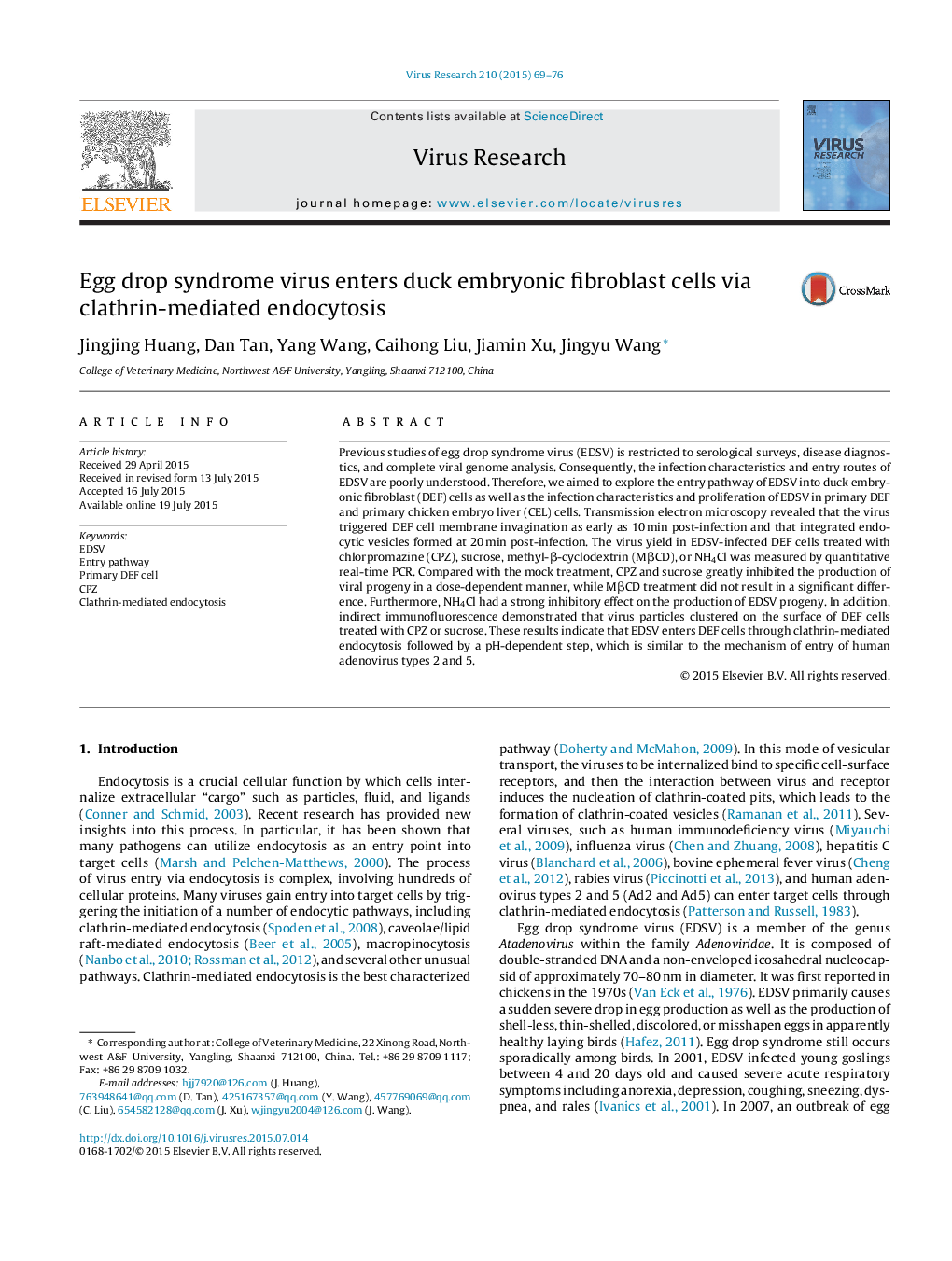| Article ID | Journal | Published Year | Pages | File Type |
|---|---|---|---|---|
| 3428036 | Virus Research | 2015 | 8 Pages |
•EDSV can cause cytopathic effect in primary DEF and CEL cells.•Transmission electron microscopy images clearly show the EDSV infection process in DEF cells.•EDSV enters DEF cells via clathrin-mediated endocytosis followed by a pH-dependent step.
Previous studies of egg drop syndrome virus (EDSV) is restricted to serological surveys, disease diagnostics, and complete viral genome analysis. Consequently, the infection characteristics and entry routes of EDSV are poorly understood. Therefore, we aimed to explore the entry pathway of EDSV into duck embryonic fibroblast (DEF) cells as well as the infection characteristics and proliferation of EDSV in primary DEF and primary chicken embryo liver (CEL) cells. Transmission electron microscopy revealed that the virus triggered DEF cell membrane invagination as early as 10 min post-infection and that integrated endocytic vesicles formed at 20 min post-infection. The virus yield in EDSV-infected DEF cells treated with chlorpromazine (CPZ), sucrose, methyl-β-cyclodextrin (MβCD), or NH4Cl was measured by quantitative real-time PCR. Compared with the mock treatment, CPZ and sucrose greatly inhibited the production of viral progeny in a dose-dependent manner, while MβCD treatment did not result in a significant difference. Furthermore, NH4Cl had a strong inhibitory effect on the production of EDSV progeny. In addition, indirect immunofluorescence demonstrated that virus particles clustered on the surface of DEF cells treated with CPZ or sucrose. These results indicate that EDSV enters DEF cells through clathrin-mediated endocytosis followed by a pH-dependent step, which is similar to the mechanism of entry of human adenovirus types 2 and 5.
